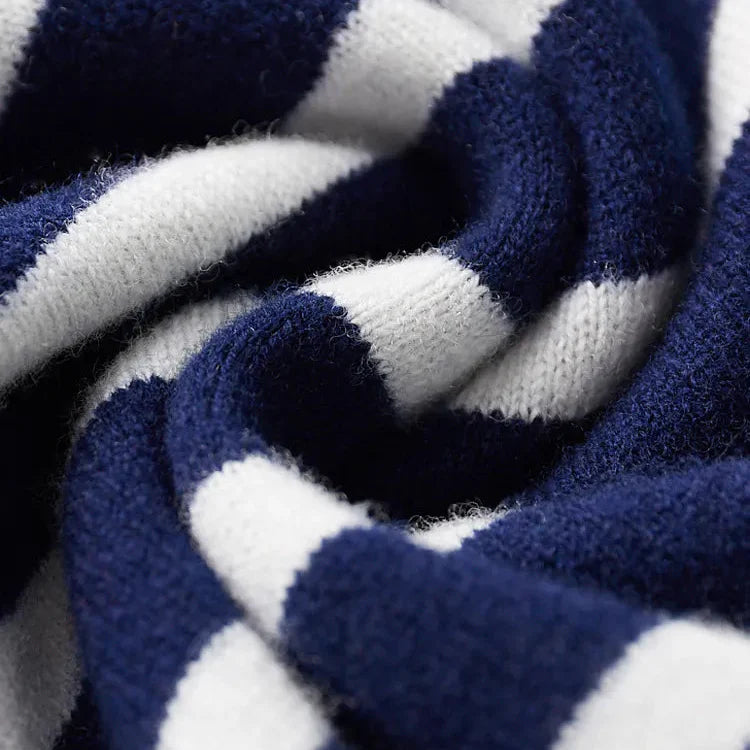A timeless wardrobe requires proper care. Learn expert-backed techniques to preserve fabric quality, prevent damage, and extend the lifespan of your favorite pieces.
How To Take Care of Old Money Clothes – Complete Guide by Matteo Fiorentino

Key Takeaways
- Follow care labels—they are your best guide for maintaining your clothing's quality.
- Use cold water and gentle detergents to prevent fabric damage and color fading.
- Avoid high heat in dryers and irons—opt for air-drying and steaming instead.
- Treat stains immediately to prevent permanent discoloration.
- Store garments properly to maintain their shape, structure, and longevity.
Investing in Quality? Then Invest in Proper Care.
Old money style isn’t just about what you wear—it’s about how you wear it and how you maintain it. Classic pieces like a well-tailored wool blazer, a crisp linen shirt, or a fine cotton polo are meant to last, but only if they’re treated with care.
Proper clothing care is the silent mark of a gentleman—it keeps your wardrobe looking impeccable, saves you money by extending the lifespan of your garments, and ensures that your clothes always feel as luxurious as the day you bought them.
Whether you're building a wardrobe of timeless essentials or refining a collection of sartorial staples, here’s everything you need to know to care for your clothes like a connoisseur of fine style.
1. Read the Labels (and Follow Them)
Most people glance at care labels, but few actually follow them. Yet, these small tags contain manufacturer-recommended instructions tailored to the garment’s specific fabric and construction.
Ignoring them? That’s how you end up with a shrunken wool sweater, a misshapen blazer, or a faded silk shirt.
Pro Tip:
If a label says "Dry Clean Only," it’s not a suggestion—certain materials like wool, silk, and structured garments need professional cleaning to maintain their integrity. However, “Dry Clean Recommended” means you can sometimes hand-wash in cold water with a delicate detergent.
2. Wash in Cold Water to Preserve Fabric Quality
Heat weakens fibers over time. Washing in cold water (30°C or below) prevents:
- Shrinkage (especially for cotton, wool, and cashmere)
- Color fading (darker tones stay richer for longer)
- Damage to delicate materials like silk and linen
Using hot water might seem like it gets clothes “cleaner,” but it does more harm than good—especially for natural fabrics.
Bonus: Energy Savings
Washing in cold water not only extends the life of your clothes but also reduces your energy bill.
3. Choose the Right Detergent
Not all detergents are created equal, and using the wrong one can strip fabrics of their softness and durability.
Best Detergents for Different Fabrics:
- Cotton & everyday wear: Mild, pH-neutral detergent (avoid heavy chemicals)
- Wool & cashmere: Wool-specific detergents with lanolin for softness
- Silk & linen: Enzyme-free, delicate fabric detergent to prevent weakening
- Technical/sportswear: Specialized detergent to remove sweat and odors without breaking down elasticity
What to Avoid:
🚫 Bleach (destroys fabric structure)
🚫 Fabric softeners (leave residue that weakens fibers)
🚫 Heavy-duty detergents (meant for industrial fabrics, not premium garments)
4. Wash Smart: Separate Colors and Fabrics
Mixing a navy blue wool sweater with a white linen shirt? That’s a disaster waiting to happen.
To avoid color bleeding, pilling, and fabric damage, always wash:
- Darks with darks, lights with lights
- Delicate fabrics separately (lace, silk, cashmere)
- Heavy vs. lightweight fabrics separately (jeans and t-shirts should not be in the same load)
Extra Tip:
Turn clothes inside out before washing to protect prints, embroidery, and delicate stitching.
5. Treat Stains Immediately
A well-dressed man never lets a stain set in. Act fast, and you can avoid permanent damage.
How to Remove Common Stains:
- Red wine: Dab with white vinegar or club soda, then rinse.
- Oil & grease: Sprinkle baking soda to absorb the oil, then wash.
- Sweat stains: Use a mix of lemon juice and baking soda before washing.
- Ink stains: Apply rubbing alcohol or hand sanitizer and blot.
Biggest Stain Removal Mistake?
🚫 Rubbing too hard!
Always blot stains gently—rubbing drives them deeper into the fabric.
6. Air-Dry Whenever Possible
Dryers are one of the fastest ways to ruin premium clothing.
- High heat shrinks cotton and wool.
- Tumble-drying weakens fibers and causes pilling.
- Elastic fibers (like in polos and dress socks) lose stretch over time.
Best Drying Methods:
✅ Hang dress shirts on wooden hangers to maintain shape
✅ Lay wool and cashmere flat to prevent stretching
✅ Use a drying rack for delicates
If you must use a dryer, always choose low heat and remove clothes slightly damp.
7. Iron (or Steam) with Care
Wrinkled clothing can ruin even the best outfit. But improper ironing can burn, warp, or add shine to fabrics.
Ironing Temperature Guide:
- Low heat: Silk, polyester
- Medium heat: Wool, cashmere, blends
- High heat: Cotton, linen
Best Alternative? A Garment Steamer.
Steamers remove wrinkles without direct contact—perfect for delicate fabrics like silk, cashmere, and wool.
8. Store Clothes Like a Gentleman
Your wardrobe isn’t just about what you wear—it’s how you maintain it when you’re not wearing it.
Storage Rules for Different Items:
✅ Suits & dress shirts: Wooden or padded hangers to preserve shape
✅ Wool sweaters & knits: Fold instead of hanging to prevent stretching
✅ Shoes: Use cedar shoe trees to maintain form and absorb moisture
✅ Seasonal garments: Store in breathable garment bags to prevent dust and moth damage
Pro Tip:
Keep your closet in a cool, dry, and dark place—exposure to sunlight causes colors to fade over time.
Final Thoughts: Your Clothes Reflect Your Lifestyle
A well-curated wardrobe is an investment, and like any investment, it requires proper maintenance. By following these expert-level care tips, you ensure that every piece in your collection remains as refined as the day you bought it.
Because true style isn’t just about what you wear—it’s about how well you take care of it.
